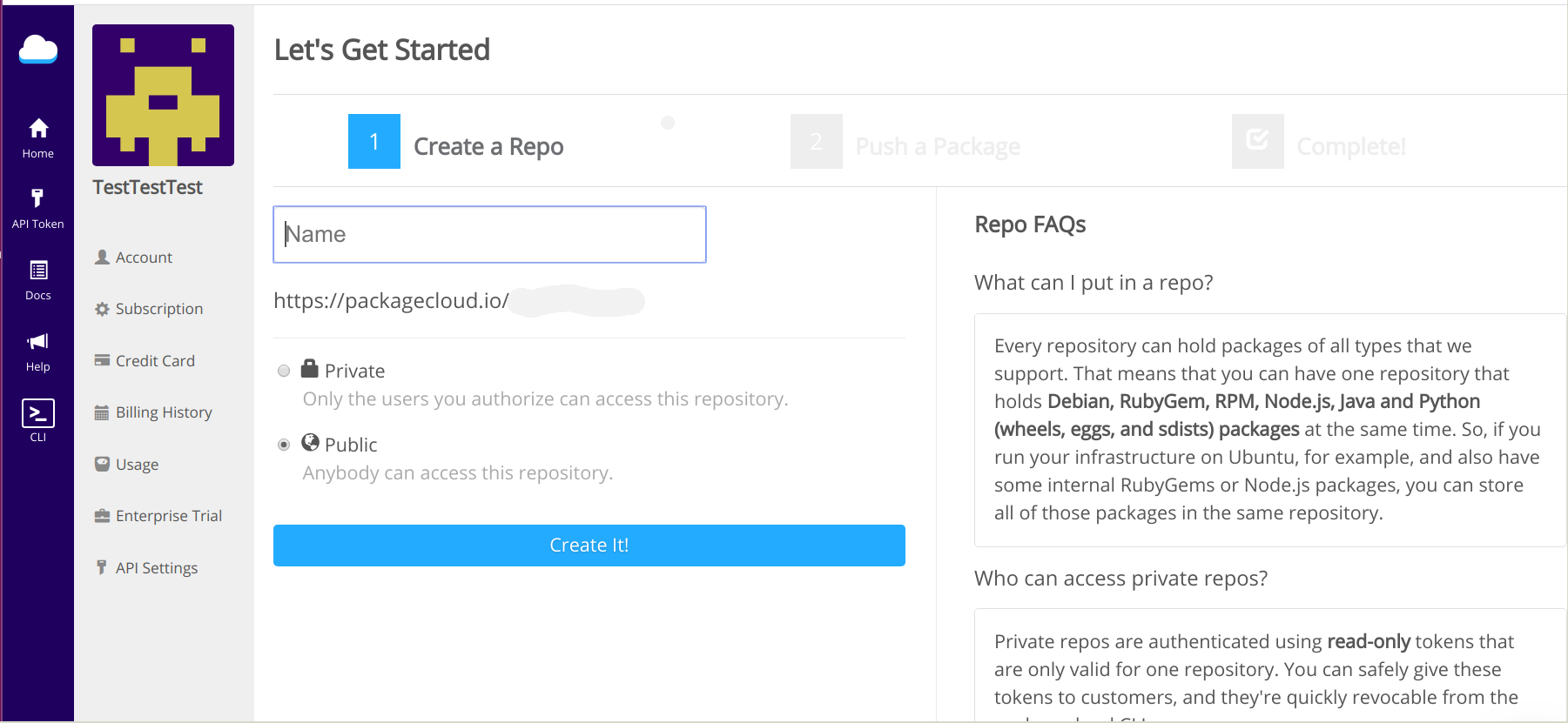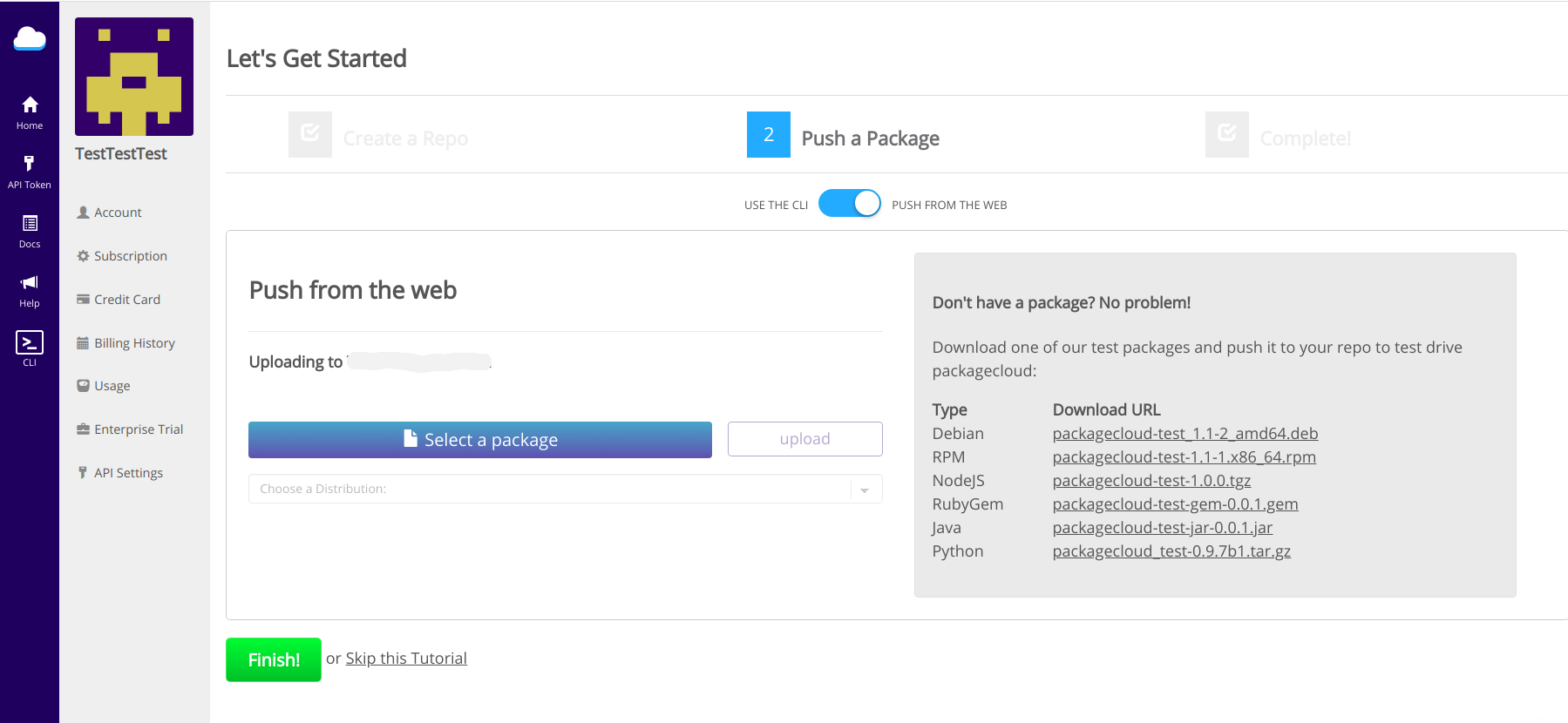Introduction
In this article, we will discover what Bintray is and what features it provided to its users. Then we will consider what Packagecloud is, and Packagecloud’s main features and benefits. We will look at why Packagecloud is a great alternative to Bintray.
Packagecloud is a service that allows you to manage any type of your packages and deploy them to any environment with one simple and easy-to-use interface. It is independent of the programming language and operating system you are using, and offers users an easy, efficient and secure way to manage your package repositories.
To better understand how easy it can be to deploy and distribute your packages, sign up for a free trial with Packagecloud.
What is Bintray?
Bintray was a universal cloud-based platform that provided software publishing, storage, and distribution services. Bintray supported all file formats and could integrate with common development technologies such as Docker, Debian, NuGet, Maven, npm, OPKG, and others. With Bintray, developers had complete control over the software publishing process and how it was used around the world.
Bintray made it easy for users to find, identify and download the software using advanced search features. It also offered unlimited storage and allowed users to create their own download sites with their own user interfaces.
Bintray sunsetted on May 1st, 2021, which means the service is no longer available.
Why did JFrog shut it down?
JFrog stated that as their platform evolves, it faces new challenges that developers have to solve effectively. In order to optimize the operation of the platform, JFrog Bintray has been closed. All Bintray services are currently unavailable. Some of the services that Bintray provided are now offered by the JFrog platform.
What did Bintray do?
Let’s list the main features of Bintray.
- Creation of private repositories with a customizable access level.
- Security features that allow you to control access to your content from the level of an entire repository to a single file and from an entire organization to a single user.
- User authentication through corporate SAML server.
- Bringing users together into organizations and teams.
- Applying an internal policy to access permissions.
- Using signed URLs to offer time-limited access to files in private repositories.
- Access control with access rights from the full repository level to a specific path in the repository for both Bintray users and external consumers.
- The ability to integrate with various tools and systems, which allows you to fully automate the development process up to software distribution.
- Detailed statistics show how your software packages have been loaded. Statistics are available in the Bintray user interface or via the REST API.
Use Packagecloud as an alternative to Bintray
After the shutting down of Bintray, its users had to choose another tool that would provide all the services they needed that Bintray had previously offered. Packagecloud is a great choice for people migrating off of Bintray. Let’s take a closer look at what Packagecloud is, its main features, and its benefits.
What is Packagecloud?
Packagecloud is a hosted package repository service. It allows you to easily deploy, manage and distribute your software written in any programming language using any infrastructure. The main features and benefits of Packagecloud are listed below.
Packagecloud features
- It supports and provides the ability to save the following packages in one repository: RPM, Debian, npm, Python, RubyGem, Node.JS, JAR, WAR, APK, AAR.
- Provides a single API for publishing packages, issuing credentials, and accessing analytics and statistics.
- The ability to integrate with various systems such as Circle CI, Jenkins, Travis CI, Buildkite, and others.
- A multilayer authentication system ensures the security of your data, as well as the distribution of levels of access to data.
- Provides enterprise-grade configuration and integrates with existing configuration systems such as Chef and Puppet.
- Supports custom domains, GPG key, and SSL certificate for signing packages repositories.
Benefits of using Packagecloud
- The ability to install on the server and integrate with your cloud provider service.
- Run businesses within your boundaries of control and security policy.
- The ability to manage your packages from one convenient and beautiful interface.
- The ability to distribute packages efficiently and securely without having to own the infrastructure.
- It does not depend on the programming language, the infrastructure used, and the operating system.
- Allows you to save all packages in a single repository.
- Allows you to save time and money on setting up servers to host packages for each OS.
- Packagecloud allows users to configure and update machines quickly and with little overhead.
- The ability to set up machines efficiently, reliably, and safely.
Sign up for Packagecloud for a free trial now and try using it for your project.
How to use Packagecloud as an alternative to Bintray
Let’s go over the basic steps you need to follow to successfully use Packagecloud in your company.
Sign up in Packagecloud
First, you should go to Packagecloud.io and create your account for free. To do this, you just need to enter and confirm your personal data and agree to the Terms of Services and Privacy Policy. After that, a trial account will be created in which you can test the basic functions of Packagecloud.
Create a repo
A repository is a collection of packages and some metadata describing the various attributes of packages. In Packagecloud, the repository provides more advanced features than a traditional one.
Let’s list the key features of the Packagecloud repository:
- Packages of all supported types can coexist in the same Packagecloud repository.
- Ability to have packages for multiple Linux distributions.
- Ability to issue read tokens to identify specific nodes and control repo access for a specific node.
Benefits of using a repo:
- Allows you to store multiple versions of the same package.
- Usually include some kind of verification mechanism (for example, GPG).
- Provides a way for many remote computers to download and install the same packages.
- Provides software vendors with the ability to offer customers stable versions of software.
You can create repositories in your account at packagecloud.io. To do this you need to log in, enter the name of the repository and click Create It!
After that, the repository will be created and you will need to select the packages that you want to load into it. To do this, click Select a package and select the necessary files from your computer. After downloading all packages, click Finish!
Another way to create a repository is to use our command line tool. Use the following command to create the repository:
package_cloud repository create myrepo
If you want to create a private repository use the --private flag.
After that, download the packages using the command:
package_cloud push username/myrepo /path/to/packagefile
You can find more examples of using the command line to create a repository here.
Below we will look at additional features that the command line tool provides for managing the repository.
Use command line client for managing your repo
The command line client allows you to:
- Create repositories for Node.js, Debian, RPM, RubyGem, Python, and Maven packages in Packagecloud.
- Download all supported packages to your repositories.
- Remove packages.
- Promote packages between repositories.
- Create and delete master and read tokens to control access to the repository.
Let’s take a look at some examples of using the command line tool.
To remove packages from the repository, use the following command:
package_cloud yank username/myrepo/[distro/version] packagename.ext
To move a package to another repository, run the command:
package_cloud promote username/myrepo/[distro/version] packagename.ext username/destination_repo
For more detailed information on how to work with the command line, read the official documentation.
Conclusion
After the sunset of Bintray, its users have no choice but to look for an alternative to it. Packagecloud offers the best modern features for deploying, storing, managing, and distributing software. With Packagecloud, you can easily download any type of packages, deploy, customize reports. This makes it the best alternative to Bintray.
Check out the Packagecloud free trial and see how much it simplifies the process of working with your project.






